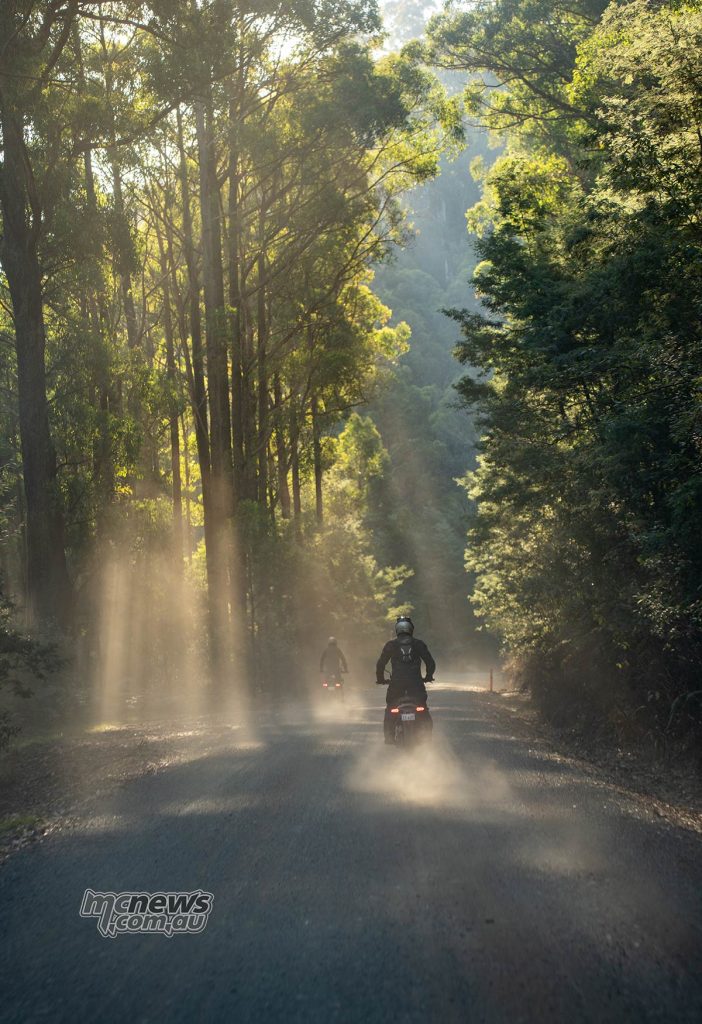Royal Enfield Himalayan 450 review
By Pete Vorst
Royal Enfield’s Himalayan has established itself as a reliable and robust workhorse since its release in 2016. Despite its budget-friendly suspension, moderate ground clearance and bare-bones simplicity, it proved to be surprisingly capable off-road.
I’m not talking Paris to Dakar terrain here, but if you took your time and picked your lines, there are not many places the Himalayan couldn’t be taken.
The tarmac-tale is just as positive. It was far more comfortable than it looked, and handled quite well for a bike rolling on 21-inch front rubber.
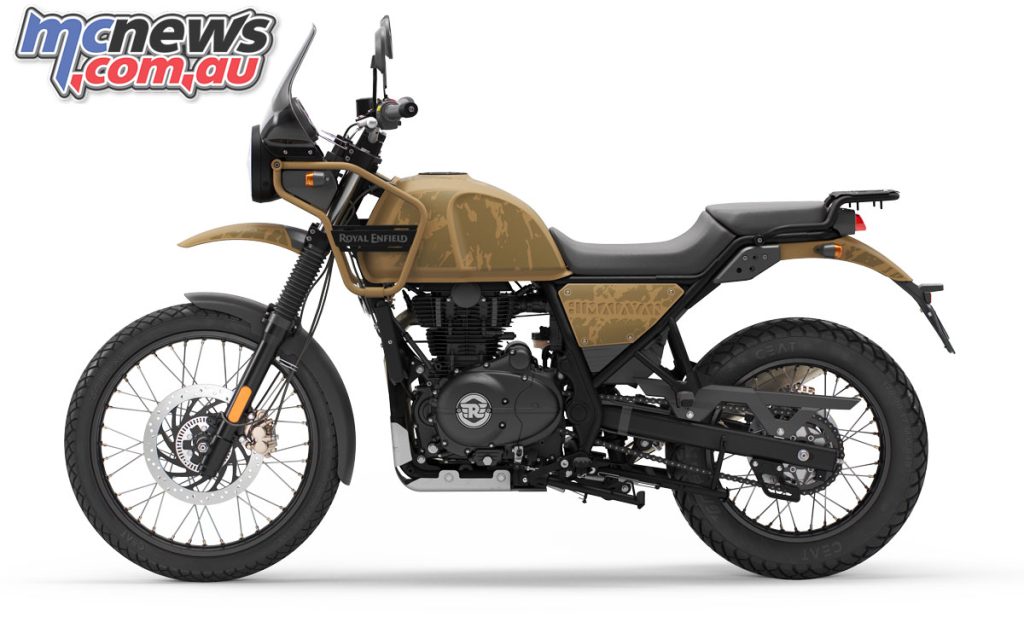
Now, that sounds like the quintessential design brief for an adventure bike, which, after all, is a compromise between off-road and on-road ability.
But here’s the thing that held the Himalayan back as a solid all-rounder in the adventure scene. The air-cooled 411cc single-cylinder LS410 engine that powered the Himalayan was, and is, an absolute slug! I’ve often said that the LS410 was a feat of engineering brilliance; it takes great skill to get so little horsepower from a 400cc engine.
But, apart from the lack of power and its basic suspension, there really wasn’t much to whinge about, especially when viewed through the frame of its $8390 price point.
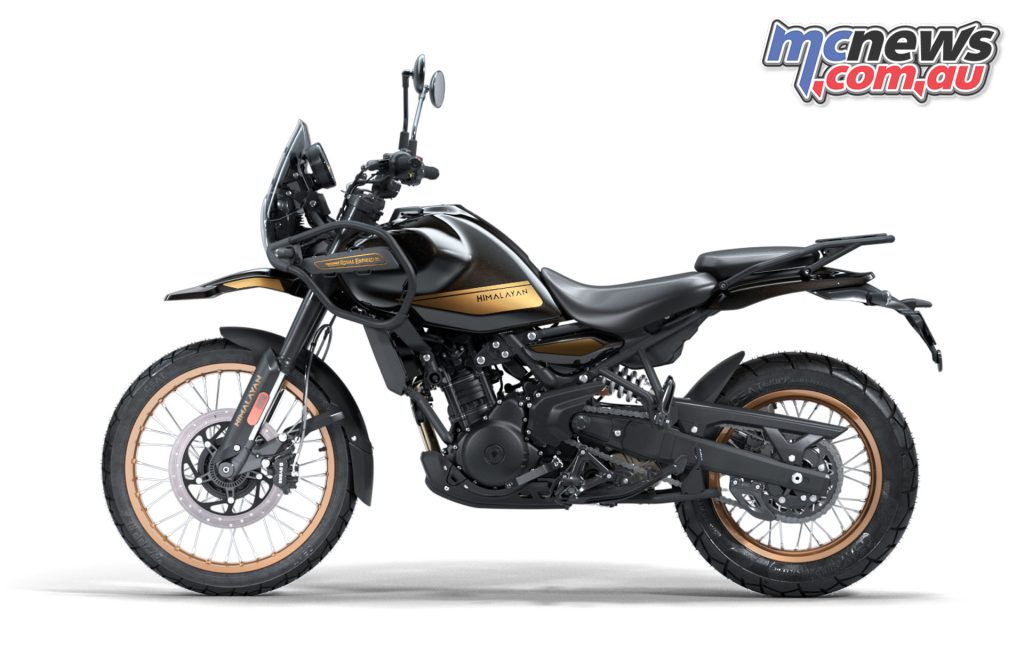
But hand on heart, I can say that Royal Enfield has listened to its customers and undoubtedly improved the shortcomings of the Himalayan by a significant margin. The Himalayan 450 is now a legitimate option for folks who want to rip out some adventure-touring miles on a bike that won’t cripple their finances or bamboozle with overblown tech.
Apart from its snazzy new looks, the most noticeable difference between the old and new versions, and that difference is vast, is the new Sherpa 450 engine.
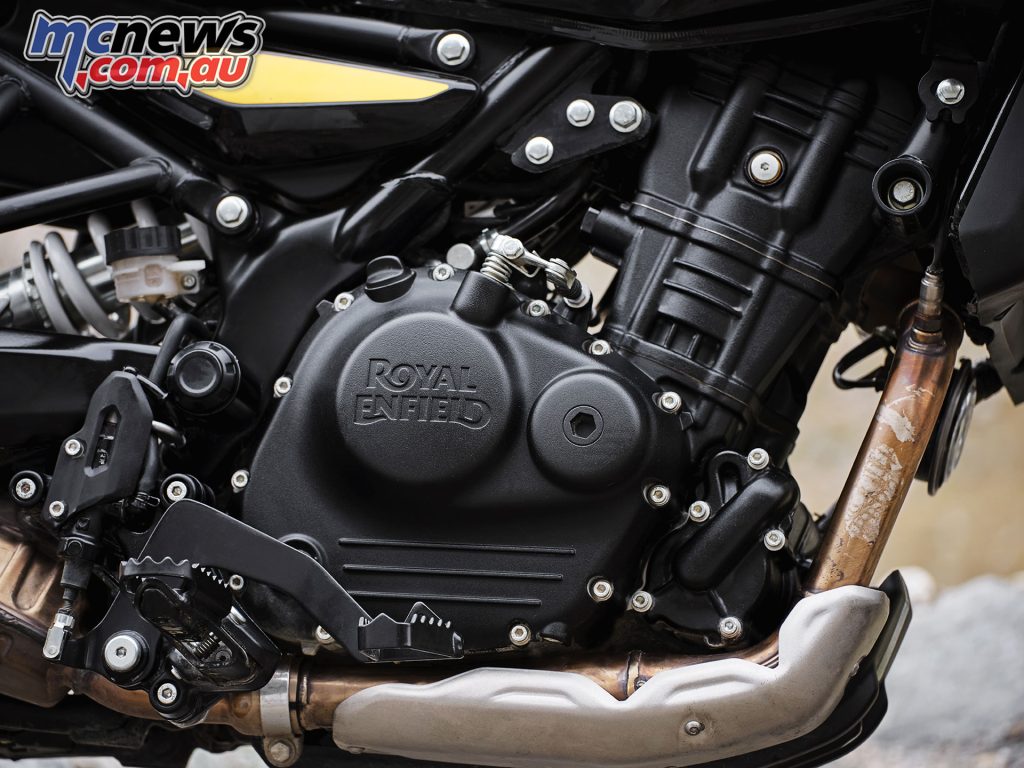
The LS410 offered up a rather asthmatic 17.88 kW of power, while the new 452 cc water-cooled engine puts out a whopping 48.86 per cent more power. The Sherpa 450 delivers 29.44 kW (39.48 hp) at 8,000 rpm. It’s no powerhouse, but it’s a significant boost and surpasses the power output of some dual-sport heavyweights, like Kawasaki’s venerable KLR650, which punches out 28.5 kW and weighs significantly more. Additionally, it isn’t far off from matching CFMoto’s new twin-cylinder 450MT with its 32.5 kW of power.
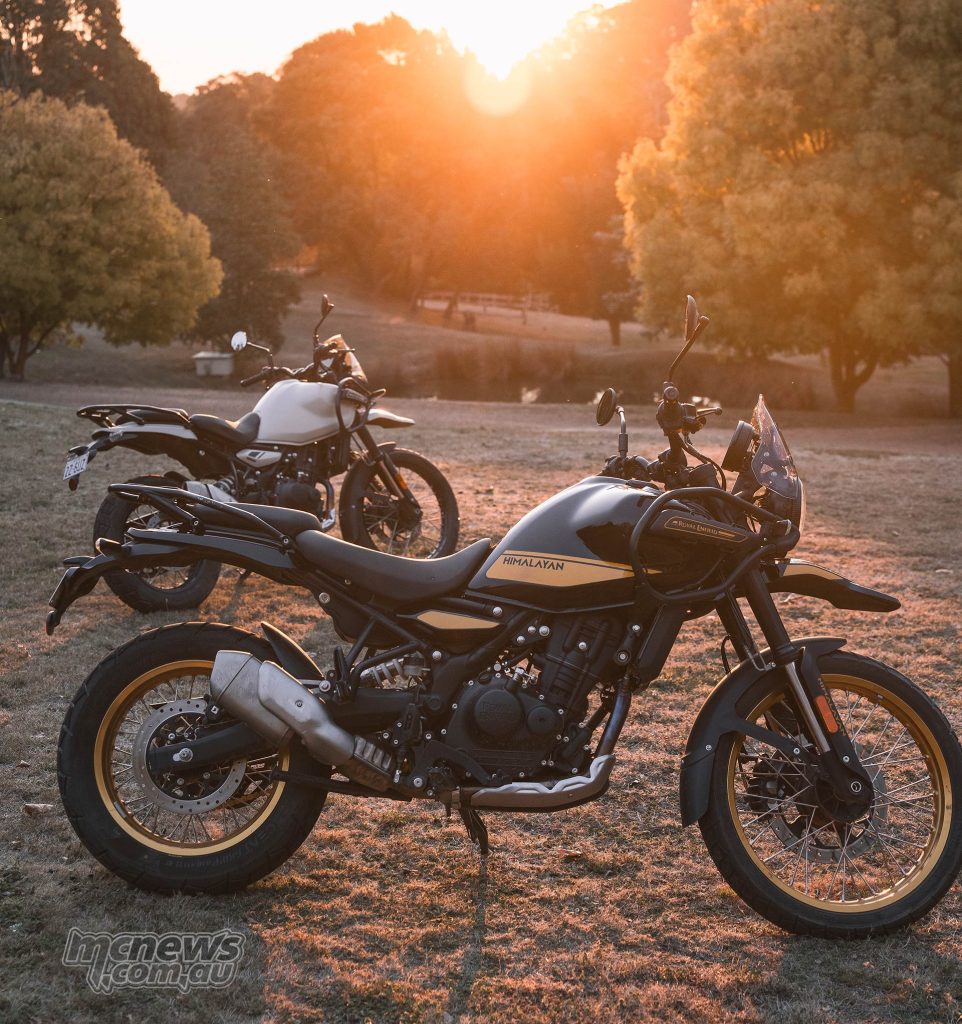
Torque has also increased from 32Nm to 40Nm. That may sound less impressive, but a 22 per cent increase means everything when you’re overtaking a semi, popping the front over a log, or playing on a tight and twisty road – after all, grunt is king!
Gone is the five-speed gearbox of the 411; the 450 gains an extra cog, and with its extra power and a six-speed box, you can cruise on the 450 in a way 411 owners can only dream of. The 450 burbles along at 5000 rpm at 110 km/h, which is right around the sweet spot where peak torque is made at 5500 rpm, and max power is realised at 8000 rpm. There’s enough mumbo for overtaking even at highway speeds, and at lower speeds, it’s got the guts to lift the front wheel, which was near impossible without serious clutch-up effort on the 411.
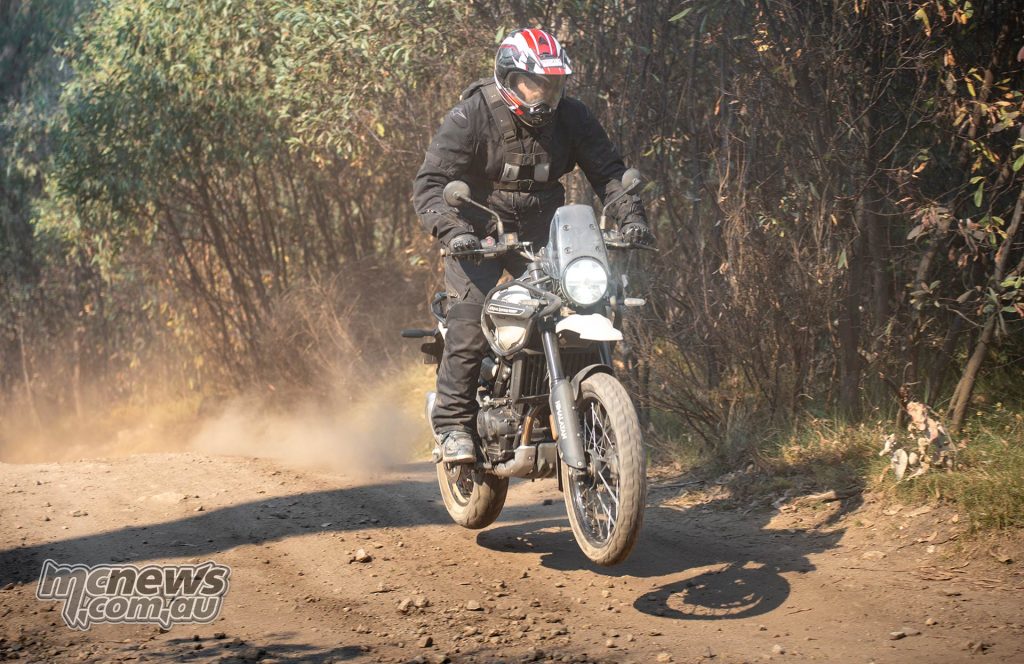
Despite all the paraphernalia associated with a water-cooled engine, a bigger generator, and an extra cog, the Sherpa 450 is approximately 10 kg lighter than the LS410 engine it replaces.
The air-filter is now located under the tank, which may sound less than ideal, but when compared to some of the latest adventure machinery, it’s pretty convenient. Accessing it is as simple as lifting the seat and undoing a bolt at the rear of the tank. Once that’s done, the tank simply lifts off, allowing you to remove the three airbox cover bolts, and voilà, smacking the dust out of your filter while sitting by the campfire in the middle of nowhere is absolutely doable.
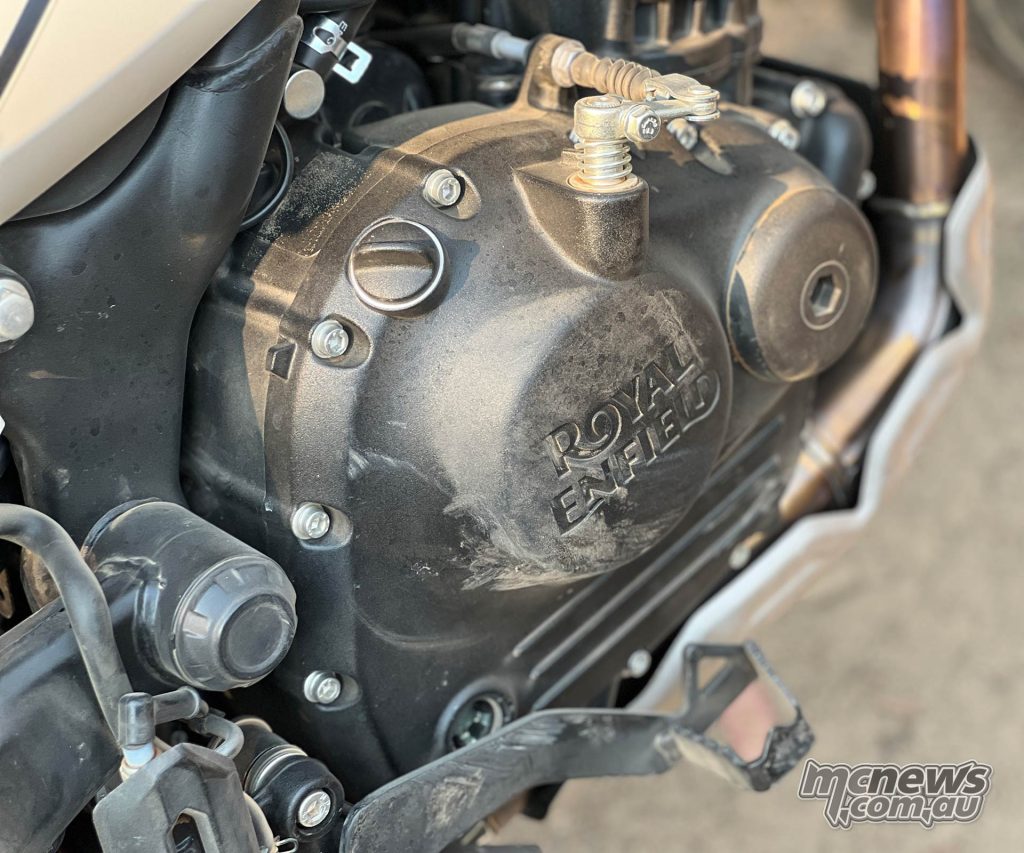
The new engine serves as a stressed member within an all-new steel twin-spar frame. Connected to the frame is a steel swingarm, which is connected to a preload-adjustable shock via a high-mounted rising-rate linkage, enhancing ground clearance.
At the front, a set of non-adjustable 43 mm Showa cartridge-type USD Separate Function Forks (SFF), with integrated hydraulic bottom control control the 21-inch wheel. There is a healthy 200 mm of travel at both ends, and ground clearance has increased from 220 mm to 230 mm.
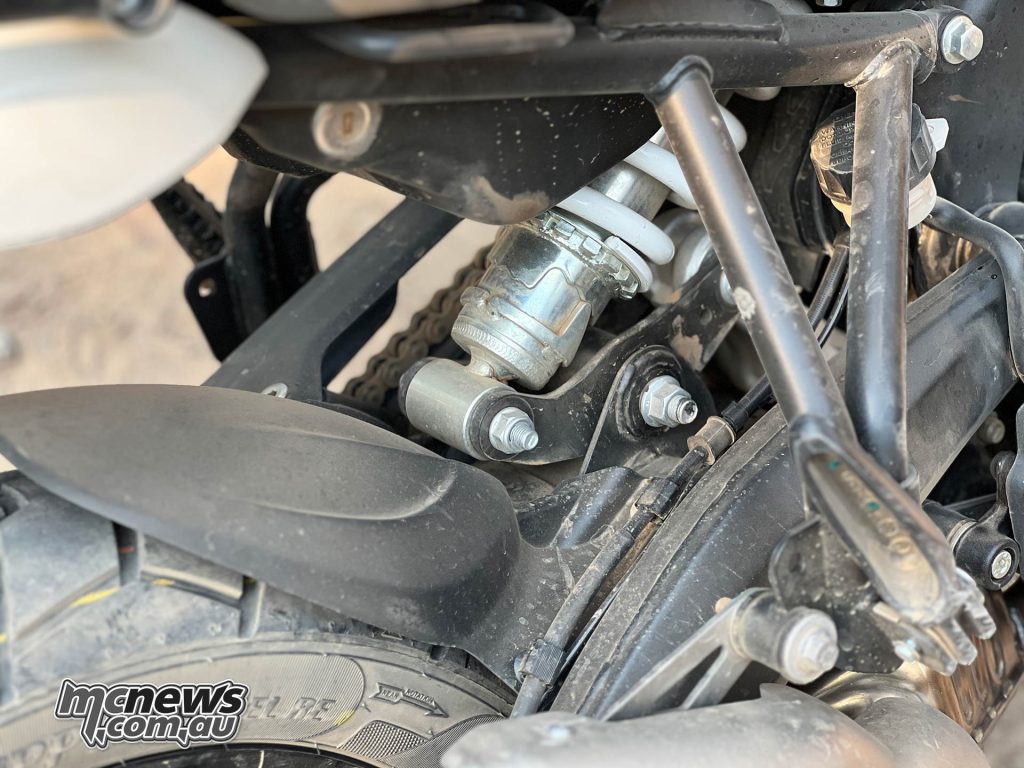
Royal Enfield has been banging on about the new and improved suspension, and while it is indeed better, it’s starting from a rather low base. To be fair, it’s a significant improvement over the previous model, but off-road, you still need to exercise finesse rather than aggression. As your speed increases, you’ll find the limits of the suspension performance. It doesn’t bottom out easily; it’s not under-sprung, but it tends to skip and deflect rather than soak and float as speeds increase. Corrugated corners are the 450’s kryptonite, and trying to get the rear tyre to hook up on these washboard surfaces is nearly impossible. The front is better, but not by a whole lot.
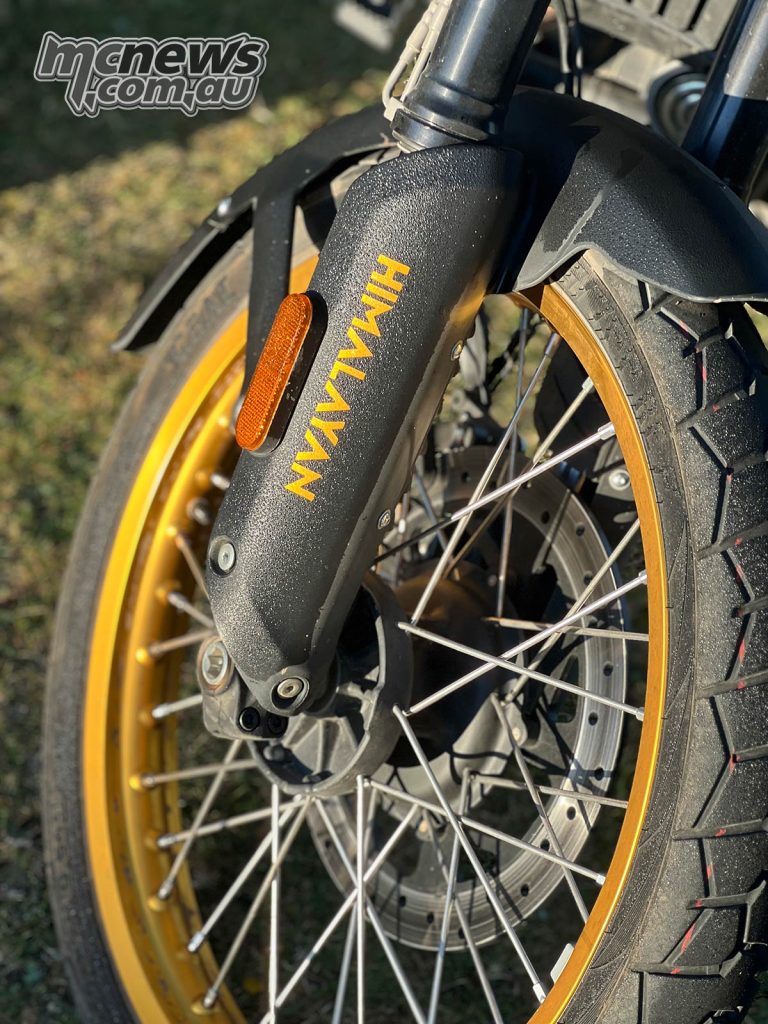
This isn’t the end of the world by any means. Suspension can be vastly improved with the help of a suspension tuner, and with such a low entry price, throwing a couple of grand at the Himalayan’s suspension will transform the bike. You’ll still have a bike that costs well under $15k. There’s not a bike around the Himalayan’s price range I’ve ridden which wouldn’t benefit massively from some attention from a good suspension tuner.
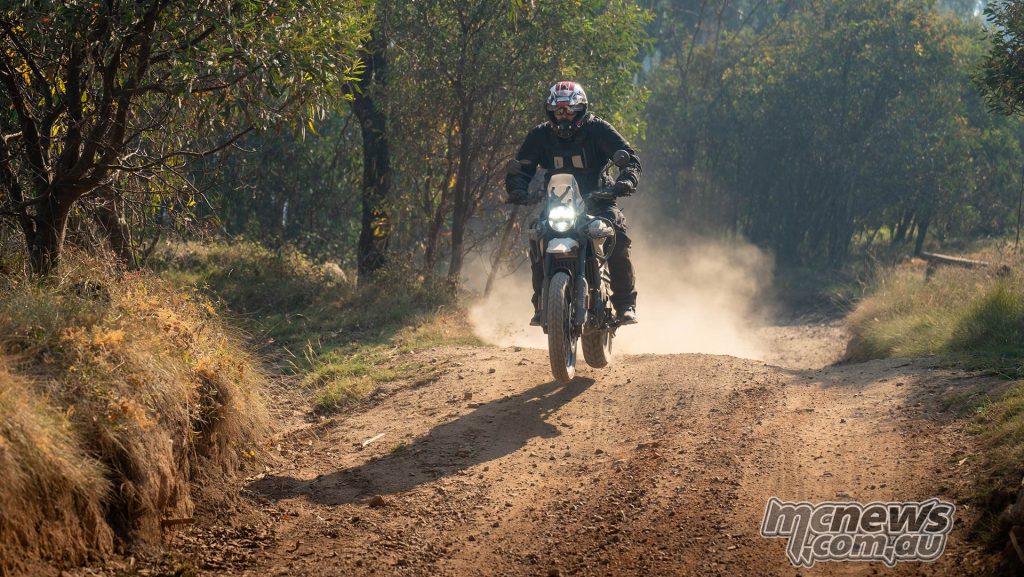
One of the gifts that the Himalayan has always offered the world is a relatively low seat-height. The design team was determined to keep the seat height within reach of squat folk, so while it’s up 25 mm from 800 mm to 825 mm, it’s still quite accessible. Additionally, the new seat is adjustable, with the high setting placing it at 845 mm off the ground.
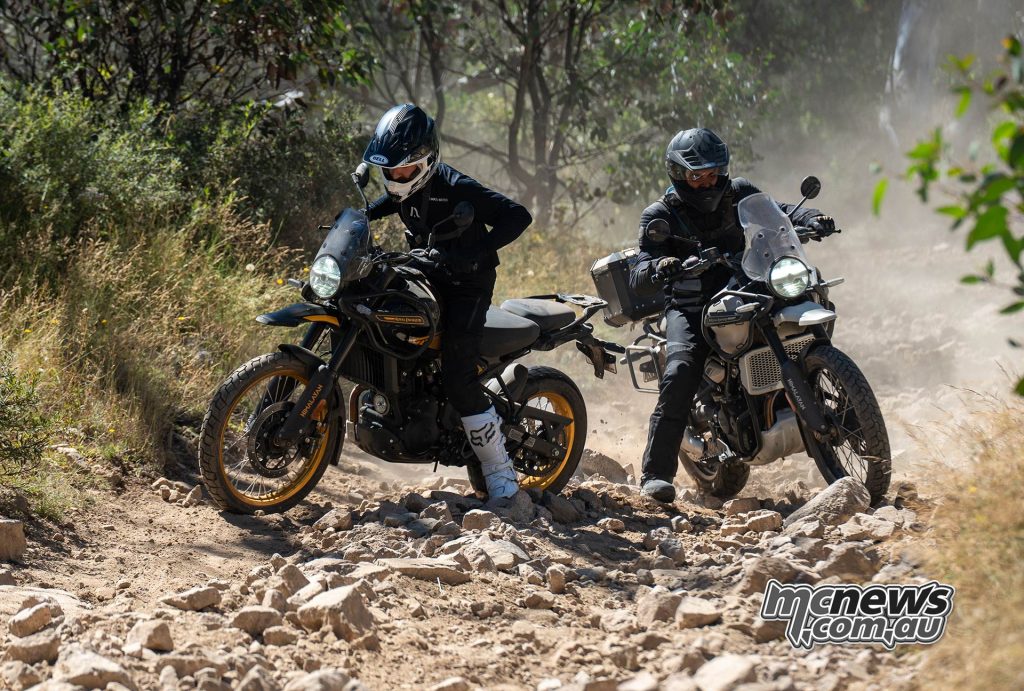
For those with an even better view of the ground, there is also a low-seat option available, bringing the seat down to a very manageable 805 mm.
But there’s a reason why, although a little taller, the seat height is less of a worry than it would be on the 411, and that can be attributed to weight distribution and poise. Royal Enfield has distributed the weight in such an effective way that the 450 feels significantly lighter than the old machine. It’s purely a matter of balance, because when it’s time to push it around, you’re reminded that it’s a 200-kilogram motorcycle once its 17-litre tank is full and it’s ready to roll.
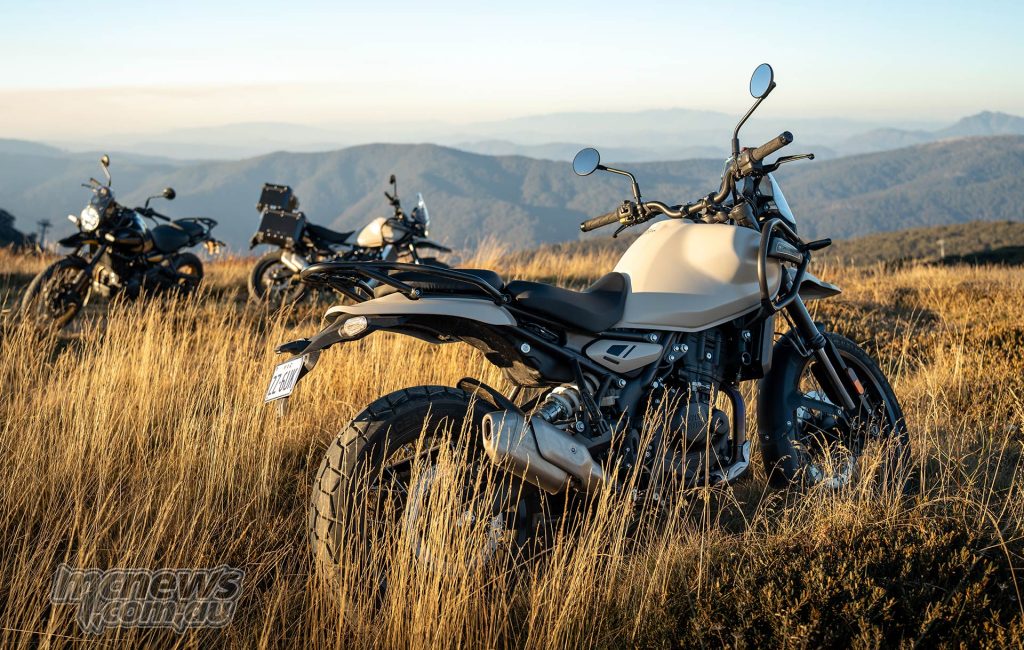
Despite the significantly lighter engine, the two models share the same claimed dry weight of 181kg. While the bigger forks, larger tank, and other small details all make a difference, I was sceptical they would add up to a full 10 kilograms. So, I put the question to Royal Enfield’s Chief of Design, Mark Wells.
“Compared to other bikes from our competitors, we include a lot of standard equipment that others sell as accessories, such as the centre-stand and luggage rails,” Mark said. “These both add a few kilograms each, but we feel they are essential to the ‘globe trotter’ value proposition.”
Mark reckons if you removed those additions, the bike’s weight would drop to around 170 kg.
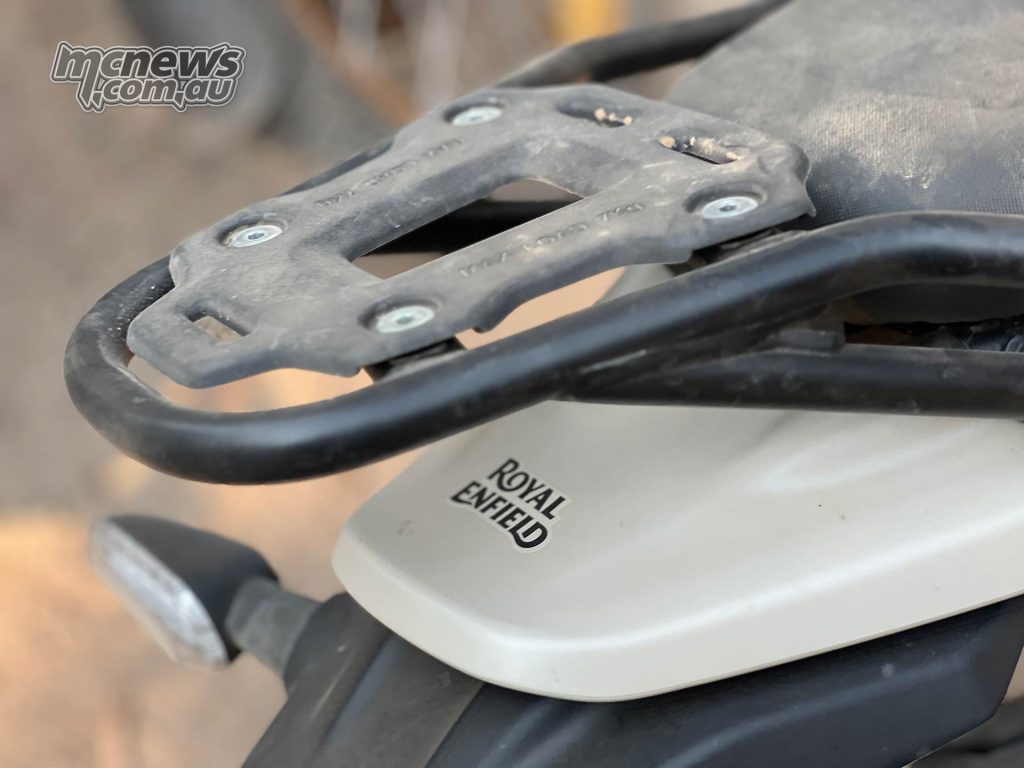
“The other contributing factor was a ‘truth to materials’ approach,” Mark says. “We wanted the bike to be simple and honest; a tool to do a job, so the fuel tank is made of steel. We wanted the bike to be durable in all conditions, so we have opted for slightly thicker wall-thickness steel tube, and again, this was designed to be the best option if you want to ride around the world. I know it’s a bold statement, but honestly and truly, I think that’s what we have accomplished.”
Pulling the 450 up is a 320 mm disc with a twin-piston Bybre caliper set-up on the front, with a single-piston caliper on the rear gripping a 270 mm disc. The 411s brakes are on the fair to acceptable end of the scale and although RE hasn’t talked too much about the brakes it doesn’t need to. You don’t need more than what it’s got, simple. There’s plenty of feel, with a nice progressive lever-action and there’s ample power to get the job done. I recently rode a couple of new LAMS bikes from an American manufacturer, and the feel through the front brake on the Himalayan is superior.
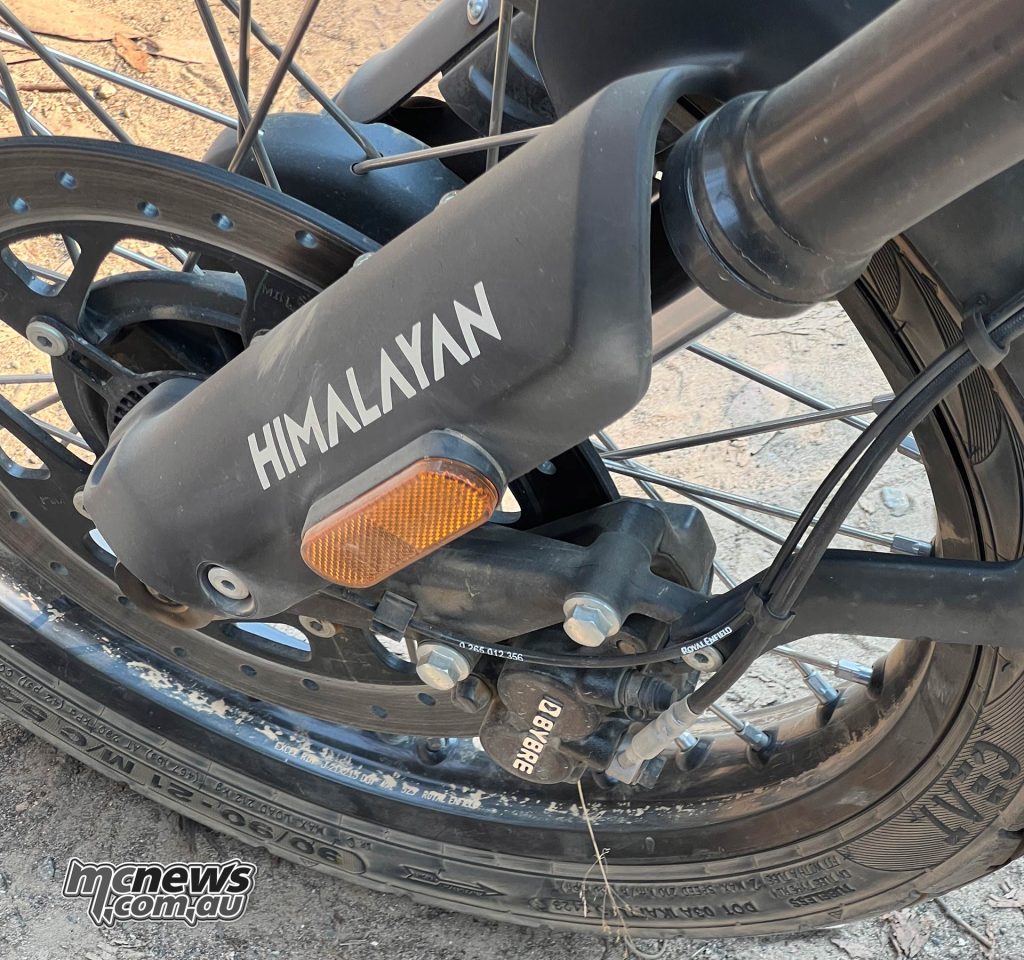
The 450 has retained all of the 411’s comfort, and in fact, it’s even better now thanks to the adjustable seat. It’s comfortable both when sitting and standing, although the handlebars are a bit low for my tall frame. This is a minor issue, but as a taller rider at 186 cm, I would always find myself mashing my knees against the fuel tank crash bars on the 411. Thankfully, this has been addressed, and my knees are much happier now.
The dash is a ripper; simple, neat, and easy to read. It provides every bit of information you could ever need, including a clock, gear indicator, ambient temperature, and more. Once connected to your phone via the RE app, you can even mirror Google Maps navigation from your device to the four-inch display for turn-by-turn directions.
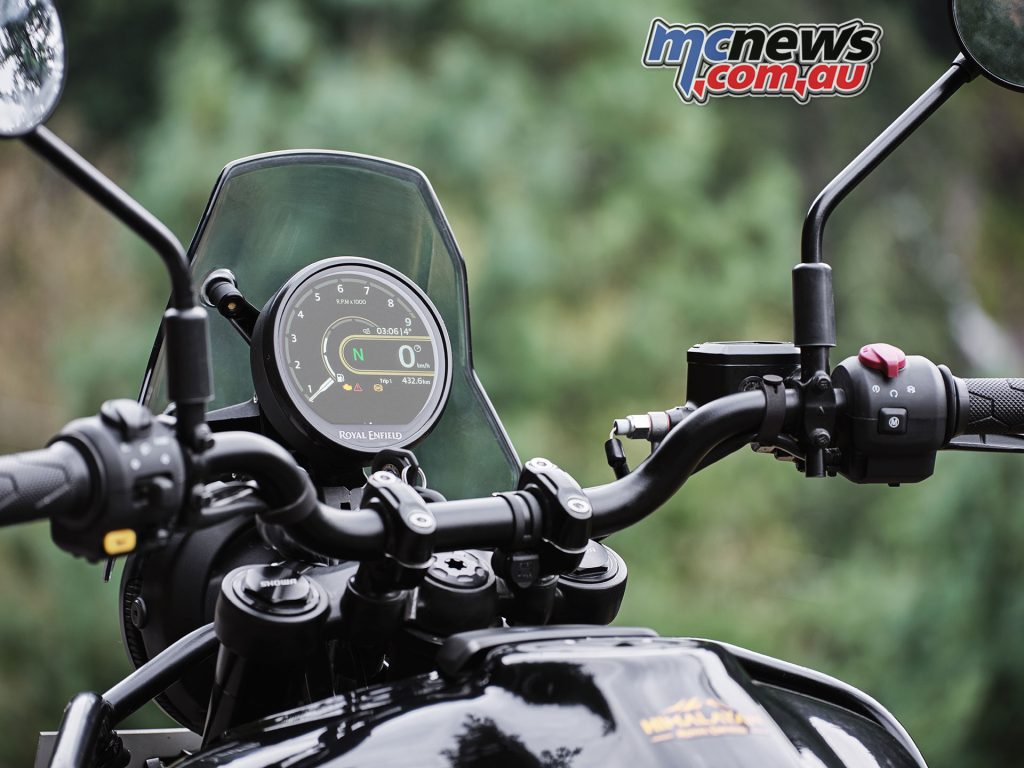
The 450 sports a ride-by-wire throttle, a first for Enfield, and you get four ride modes, according to RE. That’s a bit of a stretch because you have Performance mode with ABS on, Performance mode with rear ABS off, Eco mode with ABS on, and, you guessed it, Eco mode with rear ABS off. You can flick through the modes via the mode button on the left-hand switch block, but you need to be stopped to perform this action.
The lighting is a full-LED setup, with the taillights integrated into the rear indicators. In other electrifying news, RE has seen fit to install a beefy 418W generator, providing enough power to support the addition of a variety of electronic farkles.
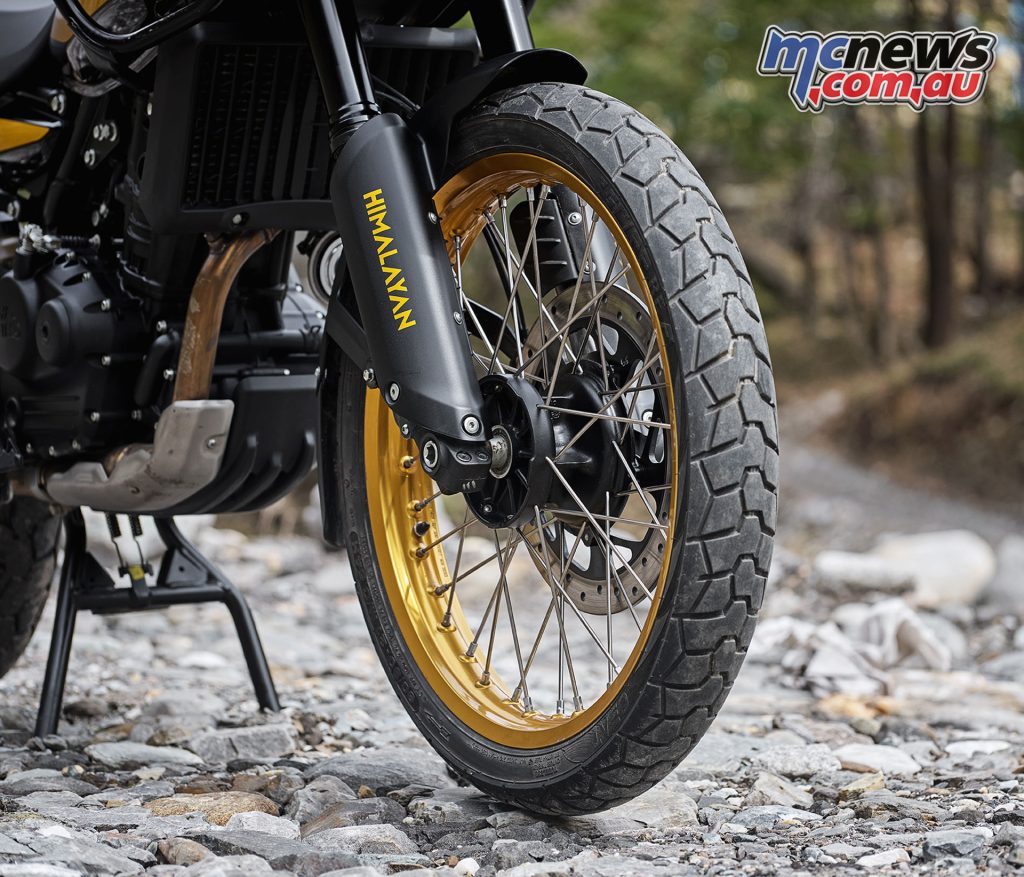
I have been a fairly harsh critic of CEAT tyres on the handful I’ve times I’ve ridden on them, hell, I’m a critic of a huge amount of standard rubber fitted to adventure machinery, because for the most part they are utterly shit. But credit where credit is due, the dual-sport hoops on the 450? Well, I rate them. They stick well on the tarmac, and I didn’t feel like I was on the cusp of death off-road. They’re no substitute for aggressive off-road rubber when the tarmac disappears, but they do an admirable job.
While much has changed, the 450 still retains the vibe that made the Himalayan such a unique bike, it’s still super-easy to ride, it’s still unintimidating, and it still trades farkles for low-frills dependability.
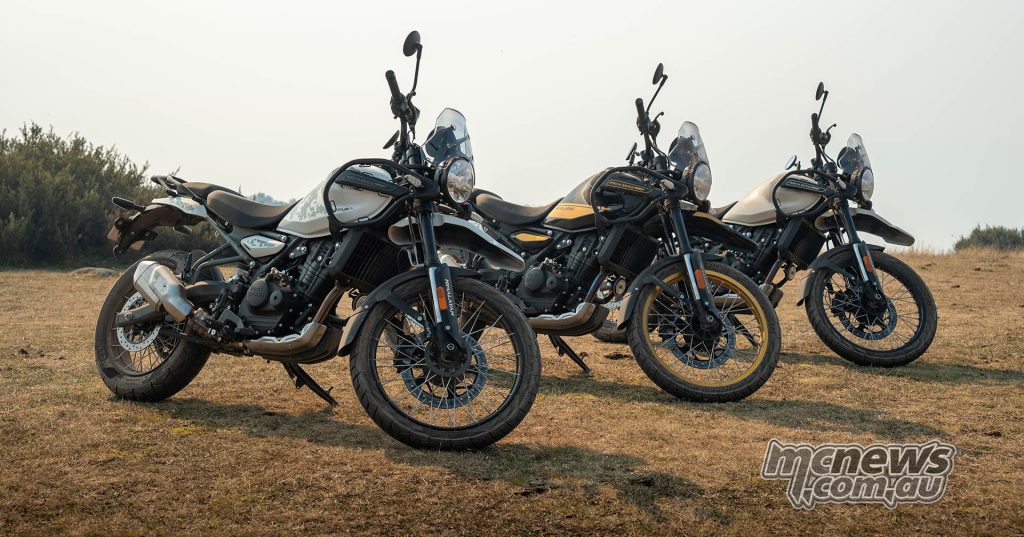
I love small unintimidating bikes. The little beggars let you get on and absolutely thrash them, and you feel like you’re a better rider. That’s what I liked about the original Himalayan, and it’s what I like about the 450. It certainly has more poke, and it handles and stops better, but it’s lost none of its charm.
It’s not perfect, nor should you expect it to be with a price tag of just $8990 ride-away.
But if you want a rock-solid rig that does everything well, but nothing great, and you just want to get on and ride rather than flicking through 17,000 modes, then the Himalayan is a bloody good proposition.
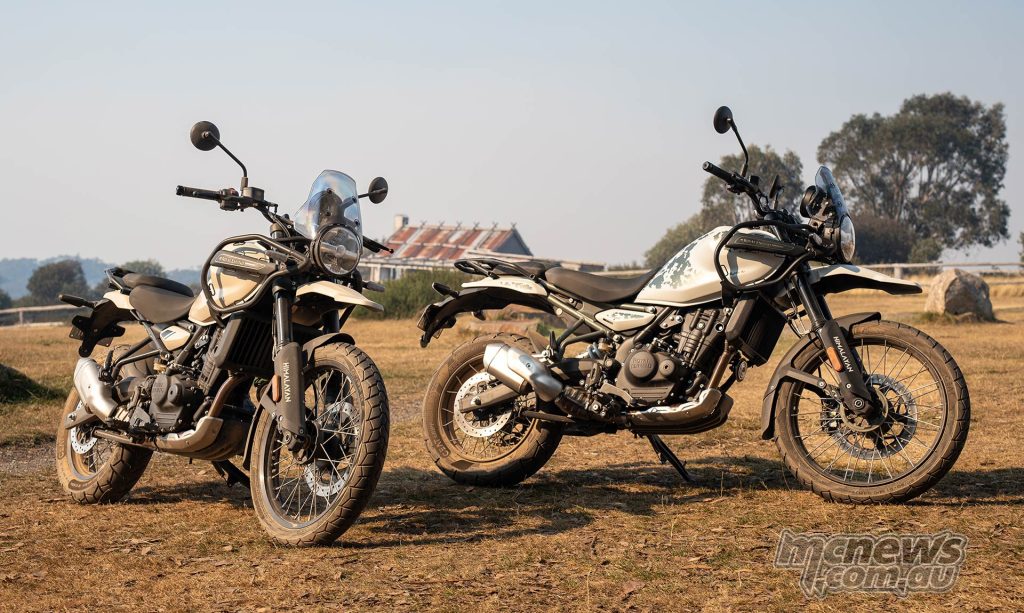
What I liked
- So much bike for the money.
- The engine is a cracker, and it feels solid.
- Unintimidating in every way.
What I don’t
- The suspension just needs a little bit more…
- It’s a hipster magnet.
- It’s still a weighty sucker.
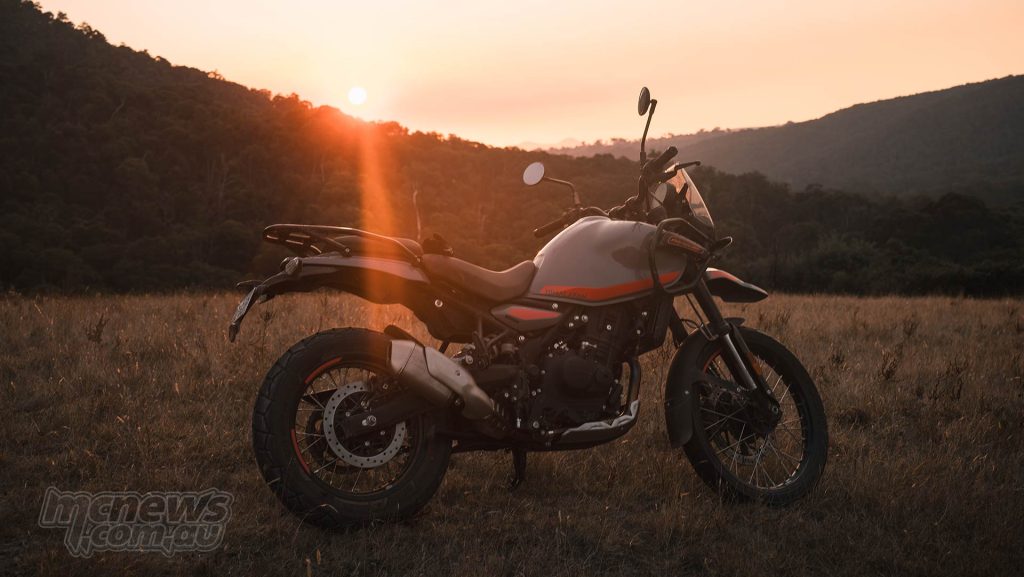
2024 Royal Enfield Himalayan 450 Specifications
| 2024 Royal Enfield Himalayan 450 Specifications | |
| Engine | Liquid cooled, single cylinder, DOHC, 4 valves |
| Displacement | 452 cc |
| Bore & stroke | 84 x 81.5 mm |
| Compression ratio | 11.5.1 |
| Maximum power | 40.02 PS (29.44 kW) @8000 RPM |
| Maximum torque | 40 Nm @5500 rpm |
| Ignition system | Digital electronic ignition |
| Clutch | Wet, multi-plate, slip assist (slipper clutch) |
| Gearbox | 6-speed |
| Lubrication | Semi-dry sump |
| Fuel supply | Electronic fuel injection 42 mm throttle body, ride-by-wire system |
| Engine start | Electric |
| Frame | Steel, twin-spar tubular frame |
| Front Suspension | Upside down fork, 43 mm, 200 mm front wheel travel |
| Rear Suspension | Linkage-type mono-shock, 200 mm rear wheel travel with adjustable spring preload |
| Tyres | 90/90 – 21″, 140/80 – R 17″ |
| Front brakes | Hydraulic disc brake, 320 mm ventilated disc, double piston caliper |
| Rear brakes | Hydraulic disc brake, 270 mm ventilated disc, single piston caliper |
| ABS | Dual channel, switchable |
| Ground clearance | 230 mm |
| Length | 2245 mm |
| Width | 852 mm |
| Seat height | 825 mm adjustable to 845 mm (Low Seat option 805 mm adjustable to 825 mm) |
| Height | 1316 mm (flyscreen top) |
| Dry weight | 181 kgs |
| Fuel capacity | 17 lts |
